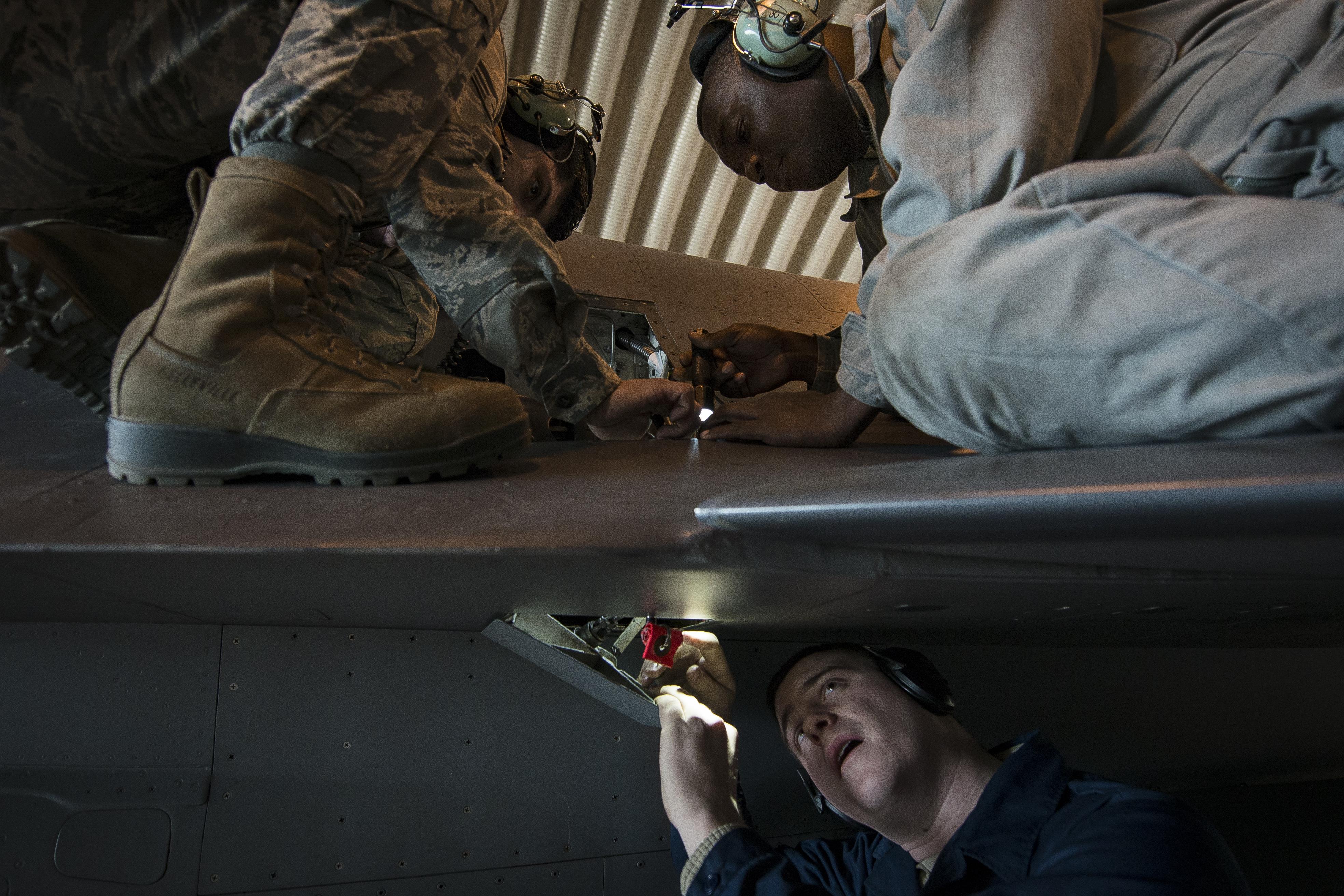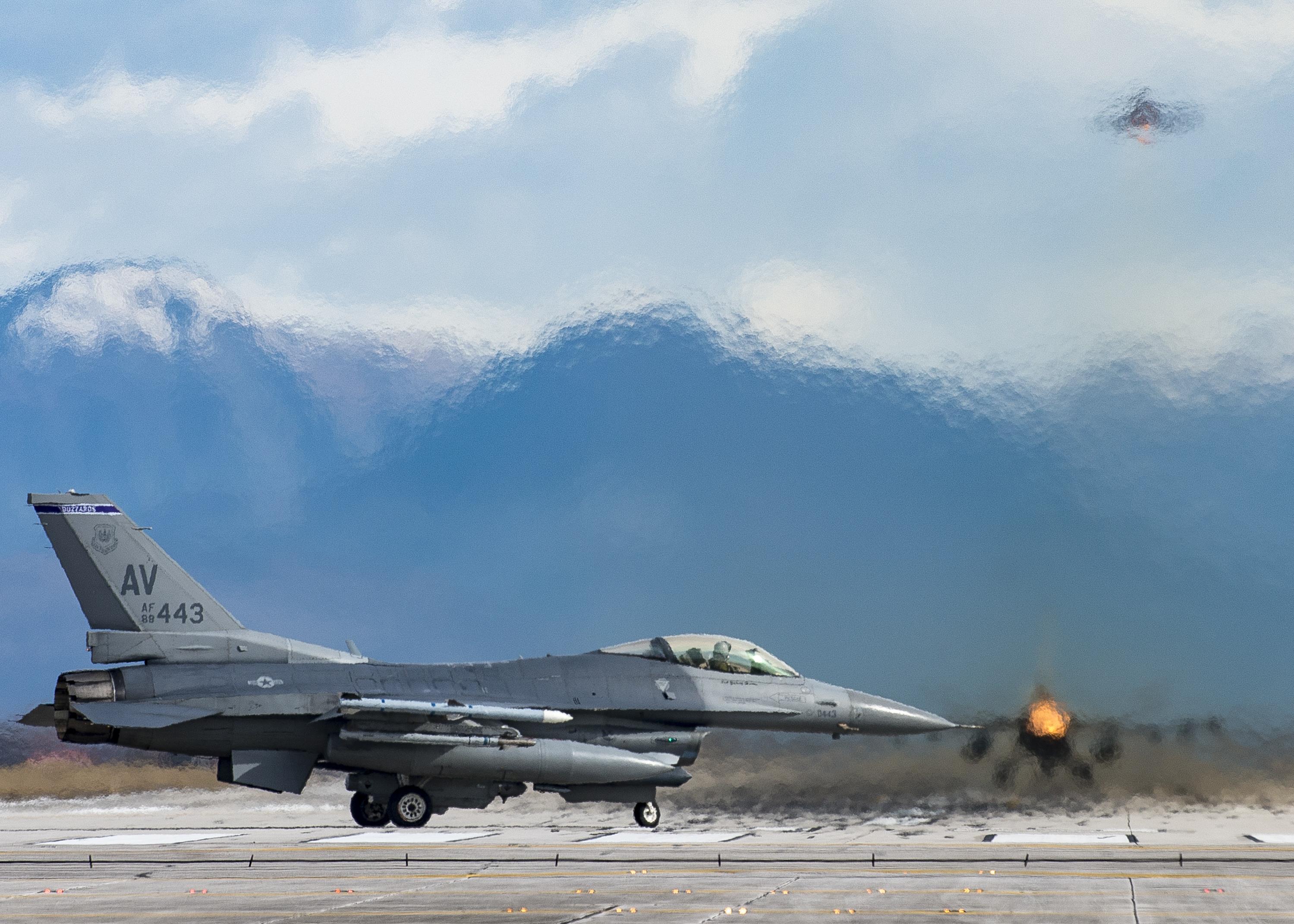AVIANO AIR BASE, Italy -- When I first took command of the 31st Aircraft Maintenance Squadron, I noticed our guidon was void of any campaign streamers. Knowing aircraft maintainers had undoubtedly been a part of this wing and its legacy of valor through World War II, Vietnam War, the Cold War, and multiple combat operations, I went to our Wing’s Historian to find out why we had not qualified for any campaign streamers.

To my surprise, because our squadron was activated after these campaigns, we didn’t qualify for any of the campaign streamers. Despite this, what can’t be questioned is the fact that since the formation of the 31st Fighter Wing, and as long as we have had Fighter Squadrons flying combat missions, there have always been aircraft maintainers that kept our aircraft flying.
I am reminded of a poem about the forgotten mechanic:
“The Forgotten Mechanic” – Author Unknown
Through the History of World Aviator, many names have come to the fore—great deeds of the past in our memory will last, as they’re joined by more and more—
When man first stated his labor, in his quest to conquer the sky, he was a designer, mechanic and pilot, and he built a machine that would fly—but somehow the order got twisted, and in the public’s eye, the only man that could be seen, was the man who knew how to fly.
The pilot was everyone’s hero; he was brave, he was bold, and he was grand, as he stood by his battered old biplane, with his goggles and helmet in hand.
To be sure, these pilots all earned it, to fly you had to have guts, and they blazed their names in the hall of fame on wings with bailing wire struts.
But for each of these flying heroes, there were thousands of little renown, and these were the men who worked on the planes, but kept their feet on the ground.
We all know the name of Lindberg, and we’ve read of his flight to fame, but think if you can, of his maintenance man, can you remember his name? And think of our wartime heroes, Gabreski, Jabara and Scott—can you tell me the names of their Crew Chiefs? A thousand to one you cannot!
New Pilots are highly trained warriors, and wings are not readily won, but without the work of the maintenance man, our pilots would march with a gun.
So when you see mighty jet aircraft, as they mark their way through the Air, the grease stained man, with the wrench is his hand is the man who put them there!

These “grease stained” maintainers, which now include both men and women, successfully generated more than 6,500 training flights this past year, while achieving a quality assurance pass rate above 90% and the best in 6 out of 10 metrics in the Combat Air Force! They did all this while supporting simultaneous operations in multiple locations and provided unrivaled readiness and combat capability for three combatant commanders.
In today’s Air Force, with our ever-evolving technology and quest to lead the way in employing newer, better, and faster aircraft on the battlefield, it is even more important that our maintainers remain on the forefront of these advancements and are properly organized, trained, and equipped.

Since 1995, we have seen a reduction of 19% in our total aircraft inventory, while at the same time a 24% decrease of assigned maintenance personnel. Add to this the fielding of next-generation fighter aircraft like the F-22s and F-35s, and you’ll find a definite lack of available maintenance manpower and experience.

Our senior leaders realize the importance of having quality maintenance personnel. Our Chief of Staff, Gen. Goldfein even mentioned in his Chief of Staff of the Air Force nomination hearing, “Manpower and specifically maintenance manpower is the Air Force’s number one readiness limiter.”
To meet our current readiness requirements, we need to recruit and train more maintainers. However, qualified maintainers aren’t made overnight, and though we have seen an increase in our manning, we now have the added challenge of an influx of new, untrained airmen.

True to form, our maintainers have risen to the challenge to overcome this training burden and have innovatively developed more efficient ways to train. A recent example of this is the Maintenance Group’s “Training Rodeo.” By effectively “bundling” combat skills training that normally would take hours through individual computer-based training, we now accomplish the training through instructor-led mass training sessions. The result is less time training, averaging 35,000 man-hours saved, and more time generating aircraft!
Innovative ideas like this are definitely helpful, but the real impact is going to be at the first-line supervisor level, and that one-on-one training must occur. We are counting on our first-line supervisors and leaders at every level to put that focus on quality training. The more we do, the better, faster, and more efficiently we can train our maintenance experts to meet our emerging readiness challenges.

Now when I carry my guidon, even without any campaign streamers, I do so with pride knowing that despite the lack of accolades, praise, or fanfare, our aircraft maintainers will continue to generate the training flights that our pilots need to stay combat ready, and when called upon, deliver the aircraft in combat to put munitions on target!